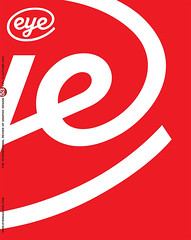Autumn 2004
Symbolise and summarise
Saul Bass
Design Museum, London, 17 July – 10 October 2004<br><br>Why has there never been a definitive book about the work of Saul Bass, one of the twentieth century’s greatest graphic designers? Having just spent an afternoon at the Design Museum’s retrospective of his work it is obvious that creating a book about this most influential of designers would be a monumental task.
Thankfully, that task has been taken on with relish by curator Neil Symington, giving the most complete overview yet presented by any exhibition. Walking around, you’re just overwhelmed by the incredible body of work that Bass has left behind, a legacy that continues to influence design even today, over 40 years after Bass started to craft his distinctive style and formulate his ideas of ‘symbolise and summarise’. You start off reading about his early formative years, then wind your way through four decades of incredible work, from the opening credits to The Man With The Golden Arm to the one-sheets for Schindler’s List and everything in between. Three theatres show Bass’s title sequence work that redefined forever the concept of the opening credits. These theatres in themselves are worth the price of admission, showing not only the well known work such as Psycho and Vertigo, but some of the harder-to-find titles including Bunny Lake is Missing and The Victors. As you walk around you realise just what an impact the designer has had on the aesthetic of our culture – something that you can easily become complacent about because of its ubiquity.
Even today, the ‘Saul Bass look’ is used either as direct ‘homage’, in the case of a recent White Stripes promotional poster, or as a source of inspiration, as with the title sequence for Spielberg’s Catch Me If You Can. The film posters themselves show how his technique of reducing an entire film down to one single, defining image then went on to inform his branding work for the likes of United Airlines, AT&T and the Girl Scouts.
But where the exhibition really shines is in the ability to get a sense of Saul Bass as a whole, with insights into his process and thinking. Original storyboards from the famous Psycho shower scene show the meticulous detail with which Bass planned out the sequence. It has been stated (controversially) that Bass also directed this famous scene – a debate that rages among film aficionados to this day.
With several documentaries also on show, including Why Man Creates, Bass on Titles, and an exclusive interview with film composer Elmer Bernstein by curator Neil Symington, the exhibition surpasses a simplistic retrospective but serves as both education and inspiration for designers of every generation.
Brendan Dawes, designer and artist, London
First published in Eye no. 53 vol. 14, 2004
Eye is the world’s most beautiful and collectable graphic design journal, published quarterly for professional designers, students and anyone interested in critical, informed writing about graphic design and visual culture. It is available from all good design bookshops and online at the Eye shop, where you can buy subscriptions, back issues and single copies of the latest issue. You can also browse visual samples of recent issues at Eye before You Buy.

